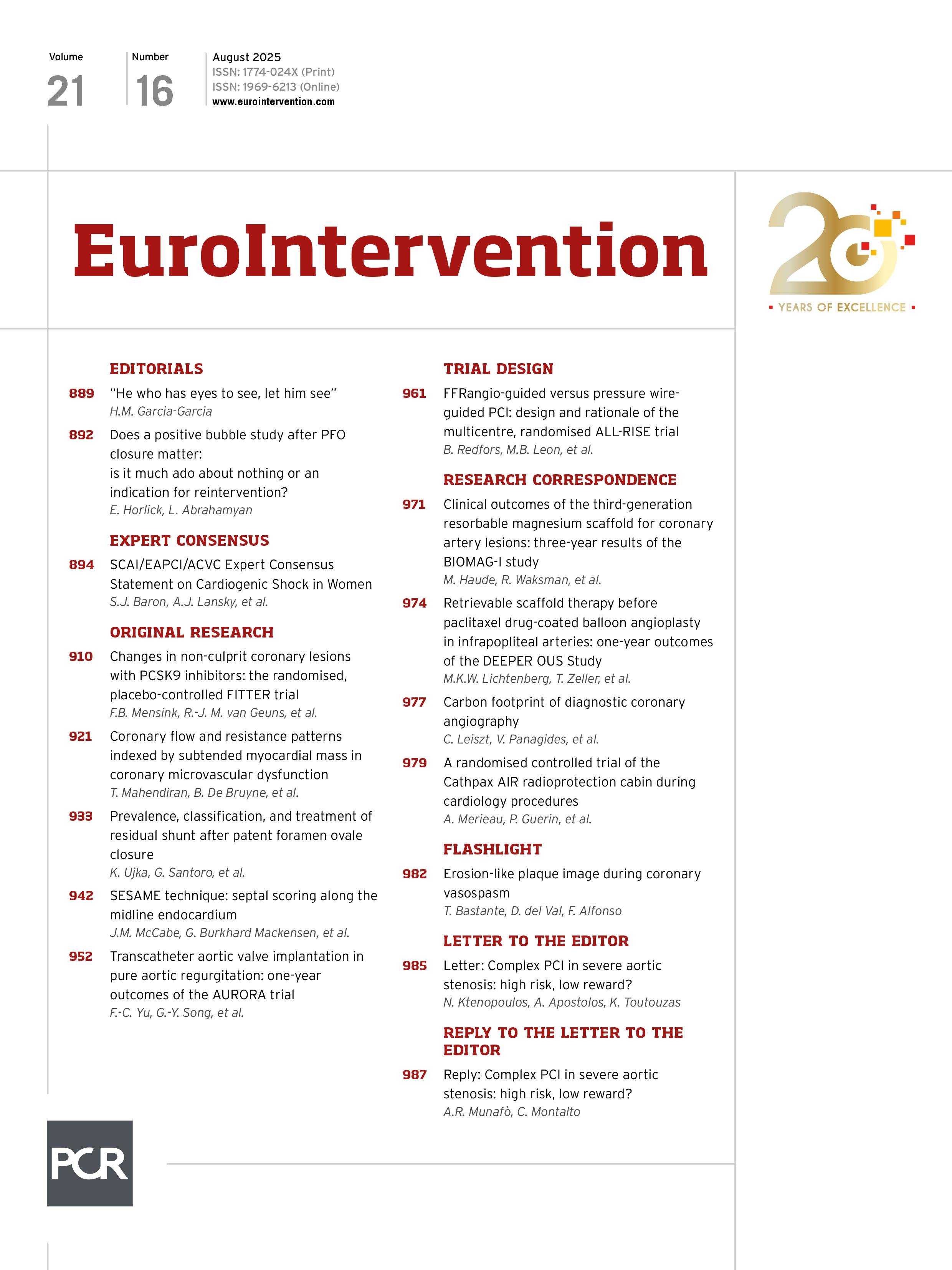Over the past two decades, lipid-lowering interventions have been one of the most used and effective treatments for modifying a patient’s cardiovascular risk and plaque composition. It has also been demonstrated that the intensity of their effect matters; the lower the low-density lipoprotein cholesterol (LDL-C), the higher the reduction in risk and the more “stabilising” the plaque modifications.
In this issue of EuroIntervention, Mensink et al present the results of the FITTER study1, in which the main research question was whether evolocumab, plus statin, influences ischaemia-producing coronary plaques in a short period of time. Following a well-executed randomised clinical trial, the authors summarised the main results as follows: “... no between-group differences were found between evolocumab- and placebo-treated patients”. I agree with the authors that there was no statistically significant difference, but this does not equate to the absence of clinical relevance, since their results help to understand the developing changes in coronary plaque as induced by proprotein convertase subtilisin/kexin type 9 inhibitors (PCSK9i).
The study’s main endpoints were lipid core burden index (LCBI) and fractional flow reserve (FFR)....
Sign up for free!
Join us for free and access thousands of articles from EuroIntervention, as well as presentations, videos, cases from PCRonline.com

